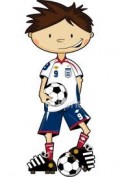Tag Archive for: Plum Tree Psychology
ADHD Resources
As ADHD becomes better understood, many resources have become available. The most succinct, accurate, and effective resources that Dr. Weller has used include:
- www.kolbe.com. This website has evaluations that folks with ADHD (children and adults) have found very helpful. Evaluations clarify each person’s unique modus operandi in dealing with the world. It is a strength-based model that can help families better understand how to make the most of ADHD.
- “Driven to Distraction: Recognizing and Coping with Attention Deficit Disorder from Childhood Through Adulthood,” by Dr. Edward Hallowell. Dr. Hallowell is a national expert in ADHD (he calls it ADD) and his books are easy-to-read, strength-based, and practical. They suggest cutting edge and real world strategies to manage ADHD.
- “Overcoming ADHD: Helping your child become calm, engaged, and focused—without a pill,” by Stanley Greenspan. This book is a must-have for parents of children with ADHD. Even if children are on medications, it offers lifestyle and relationship suggestions to optimize the ADHD family experience.





